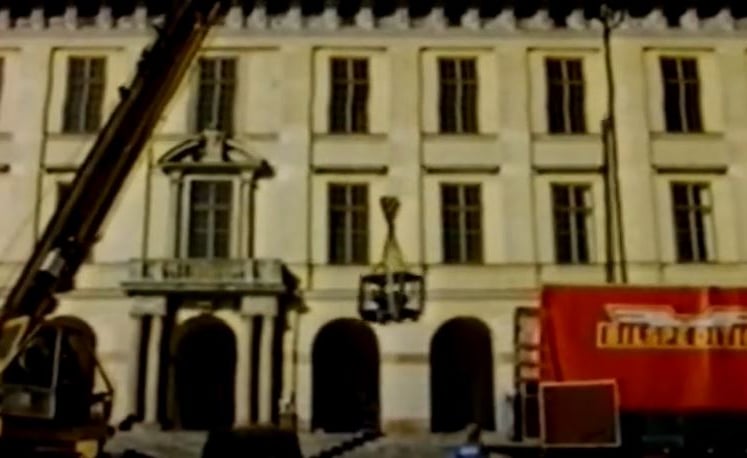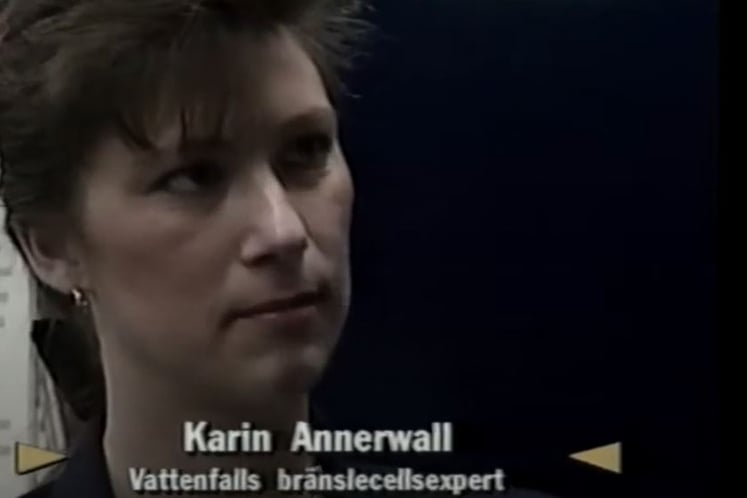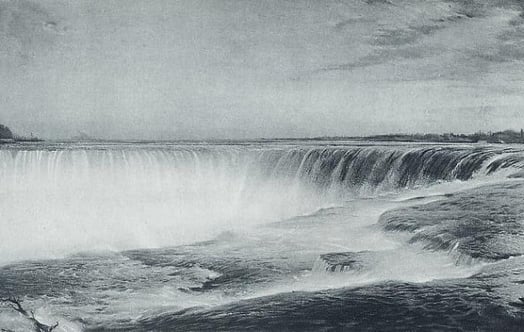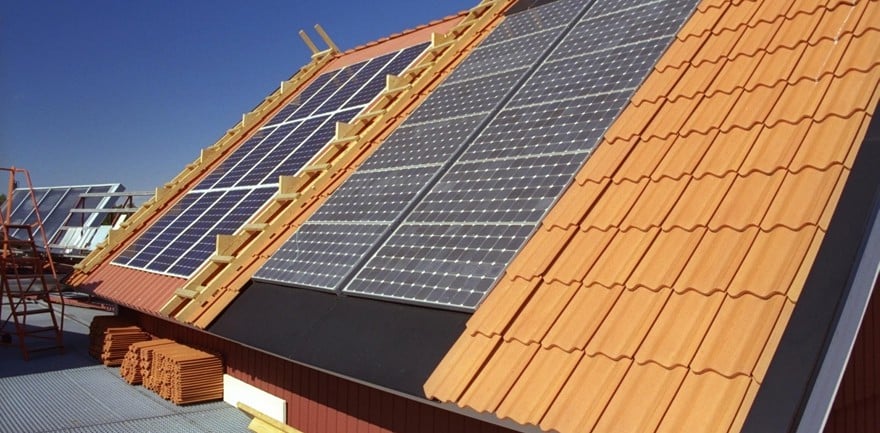
Searching for alternatives
Necessity is the mother of invention. Vattenfall has explored and experimented with many alternative energy solutions. Both how to save energy and how to make use of new energy sources.
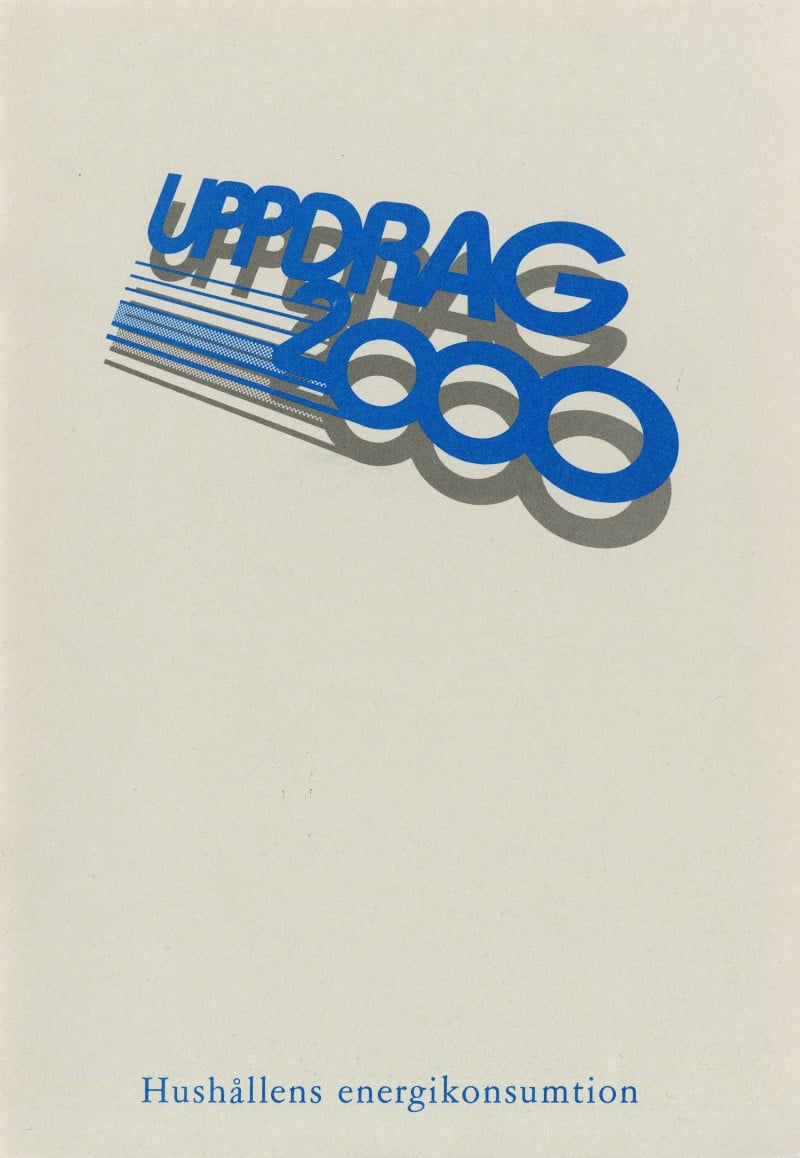
'Uppdrag 2000'. The cover of a brochure about the energy consumption of the households, by Vattenfall. Year: - | Place: - | Creator: Okänd | ID: VF001022
Sweden has been affected by energy crises on a number of occasions. Perhaps the most serious occurred in 1973, in connection with the Arab-Israeli conflict. At that time the oil price rose by 400 per cent in a single stroke. There was another oil crisis in 1979 in connection with the Iranian revolution. Such crises gave rise to new ideas about how to save electricity and find new sources of energy.
Vattenfall's project Uppdrag 2000 (Mission 2000) was a large-scale project involving energy efficiency between 1986 and 1990. The aim was to use mostly full-scale experiments in reality to carry out a realistic assessment of how much electricity it was possible to save. It examined, among other things, how energy management could be affected by a change in behaviour. Vattenfall invested almost SEK 400 million in Uppdrag 2000 over four years. The project helped obtain extensive knowledge of customer requirements and the possibilities available for energy conservation. Vattenfall received a great deal of good publicity, not least in the project locations. The findings from Uppdrag 2000 were that it was possible to save 8-17 per cent of electricity, and that did not include the electricity-intensive industries, where there was huge additional potential.
The solar energy project
‘Uppdrag 2000’ was preceded in the early 1980s by the ‘Project for solar energy and heat pumps’, known generally as ‘the Solar Energy Project’. After the oil crises of the 1970s, the Swedish Government presented a proposed energy bill in 1979 that set out measures to conserve oil, including expanded district heating, solar heating and the transfer of hot water from nuclear power plants. Vattenfall was commissioned to develop, evaluate, and “in practical terms introduce technology and products needed to make solar energy commercially available for heating purposes.”
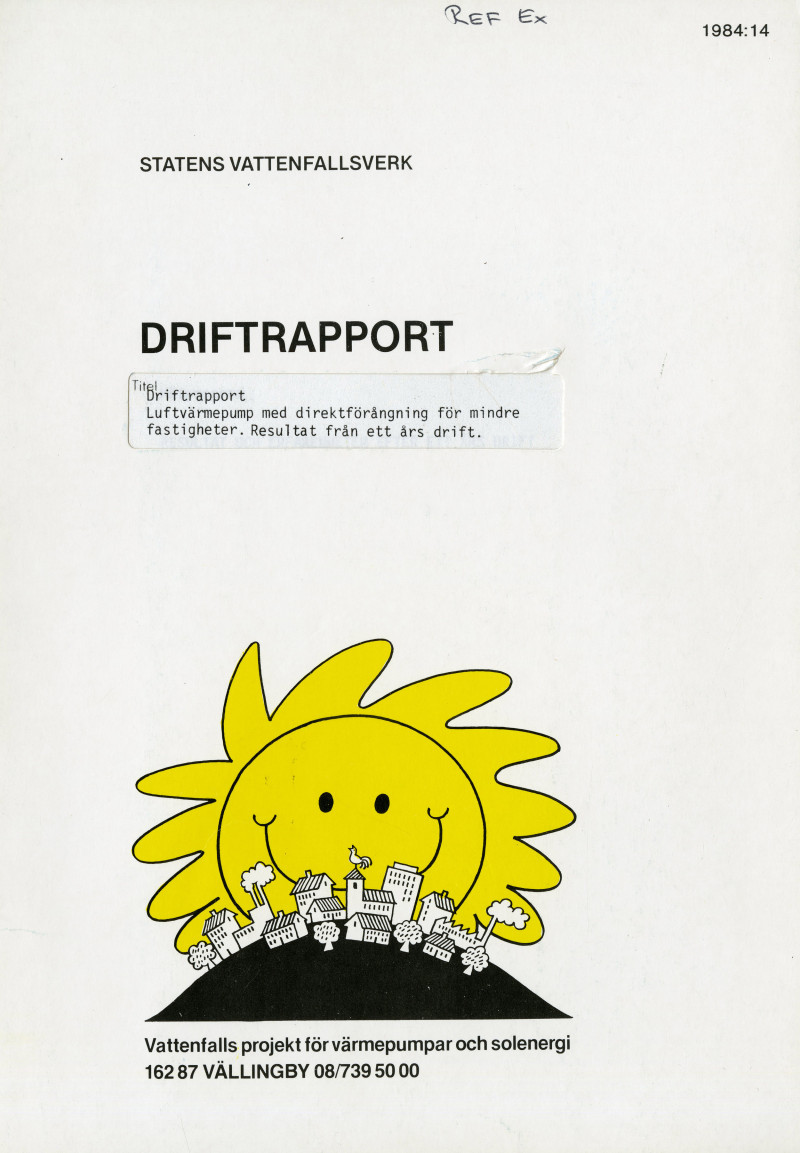
Air heat pumps, results from one year of operation. From Vattenfall's project regarding solar energy and heat pumps. Operation report. Year: 1984 | Place: - | Creator: Okänd | ID: VF001010
Heat pump technology was then an exciting but relatively unknown technology. Vattenfall interpreted its mandate as including investment in heat pumps, because the heat extracted from the air and ground by heat pumps is, in effect, solar energy. Heat pumps could be used to supply buildings with energy-efficient and environmentally friendly heat.
The head of the project was Bengt Nordström, at that time Vattenfall’s planning director. Nordström had, tactically enough, initiated Vattenfall’s first forays into heat pumps prior to the first oil crisis, and was something of a driving force for heat pumps within Vattenfall throughout the 1970s.
Between 1979 and 1987, Vattenfall invested around SEK 600 million (in today’s money) in the Solar Energy Project, which focused on full-scale installations, not theoretical studies. Vattenfall supported the development of heat pumps of all sizes – from small heat pumps for detached houses to large heat pumps for municipal district heating plants. The aim was to help Swedish manufacturers to develop more efficient, reliable and competitive heat pumps. Vattenfall’s efforts soon saw results. By the beginning of the decade, there were 100,000 heat pump installations throughout Sweden.

Exhibitions gives further information. From a brochure about Vattenfall's projects regarding solar energy and heat pumps. Year: 1984 | Place: - | Creator: Okänd | ID: VF001007
In particular, Vattenfall’s initiative increased the number of large heat pumps during the 1980s. Today, the largest heat pumps in the world are still installed in Sweden. But even the market for small heat pumps grew significantly.
Vattenfall also formed a research council for solar energy and heat pumps in 1980. The role of the council was to contribute new ideas and useful features. Its members included Bengt Nordström, along with representatives of Stiftelsen Bergsteknisk forskning (the rock mechanics research foundation), Värmeverksföreningen (the heating plant association) and the Royal Institute of Technology in Stockholm.
The heating field in Sweden has seen radical changes since the 1970s. In the early 1970s, 75 per cent of heating came from oil. Today, it is only a very small percentage. Vattenfall’s projects probably had an important influence on heat pump distribution in Sweden. The Swedish housing market still features more heat pumps than anywhere else in the world.
The Bioenergy project
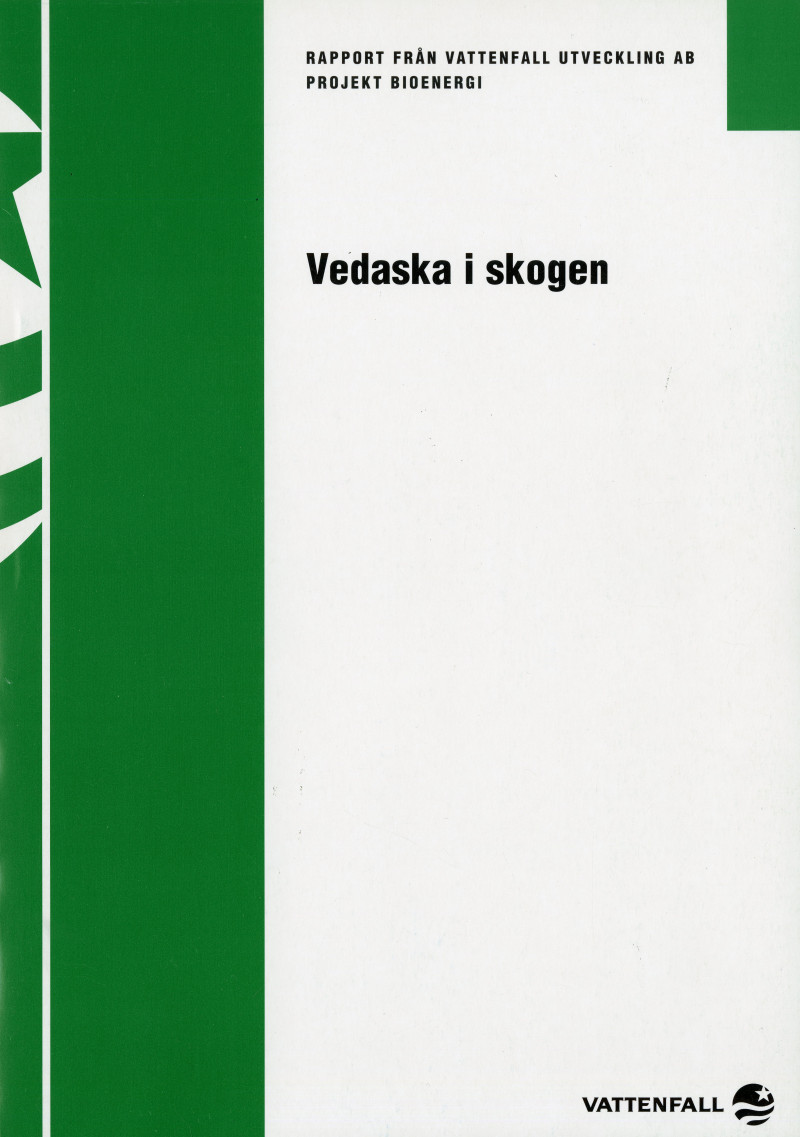
'Biomass ashes to the the forest'. The cover of a report published by Vattenfall utveckling AB. Project bio energy. Year: 1996 | Place: - | Creator: Okänd | ID: VF001008
Biomass has long been an important source of energy for Vattenfall. In 1991, Vattenfall launched a large-scale bioenergy project to identify whether biomass could help to replace nuclear power. The project involved people with diverse skills, and Vattenfall built up a broad knowledge base within the company. Following the tripartite agreement in 1991, when the requirement to decommission two nuclear power plants by 1995 and 1996 was abolished, finding an alternative was no longer so pressing. The bioenergy project then changed direction. The focus was more on increasing knowledge of the entire biomass cycle – from fuel extraction to ash recycling. The project never led to biomass being used solely for electricity production, but the knowledge has proved useful for heat production instead.

Micro biogas production. Year: 2010 | Place: Nynäs Gård | Creator: Hans Blomberg | ID: VF000087
Other alternatives
A more unusual project began after the 1973/74 oil crisis, when Vattenfall carried out new trials using peat as a fuel. Peat had been used before, but once oil became cheap in the 1960s, it was no longer used. In the late 1970s and early 1980s, Vattenfall carried out extensive investigations, on behalf of the government, into peat-fired heating and power plants throughout Sweden. Vattenfall also participated in several development projects for mining and burning of peat, but more large-scale activities never followed. Nevertheless, the combined heat and power plant in Uppsala still uses peat as a fuel.
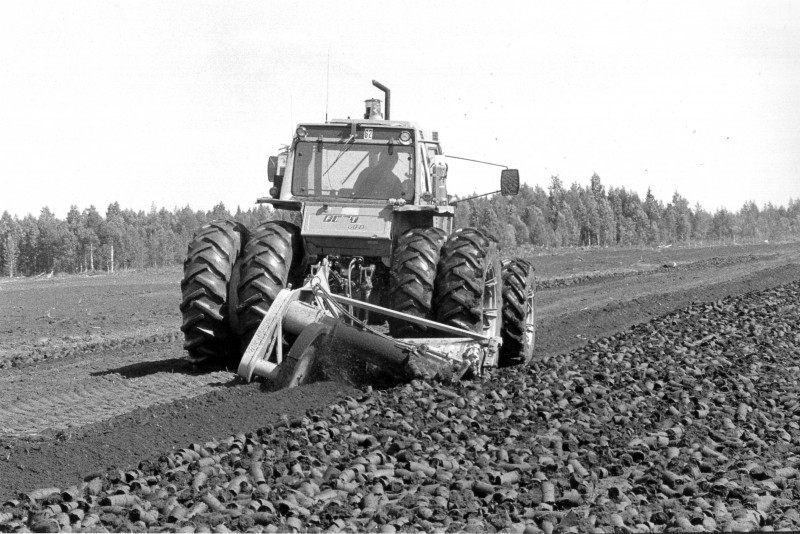
Breaking of sod peat. Year: - | Place: Norrbotten | Creator: Okänd | ID: VF000089

Uppsala combined heat and power plant. Vattenfall's facility in Uppsala consists of several different units that generate electricity and produce district heating, district cooling and steam. Almost 95% of all properties in Uppsala are heated with district heating. Year: 2008 | Place: Uppsala | Creator: Bosse Johansson | ID: VF000091
For a period fuel cells were 'hot' within the energy industry, but interest soon cooled off. During the early 1990s, Vattenfall set up a number of small installations, in Solna and Varberg, among other locations.
Vattenfall has also experimented with solar energy to a lesser extent. Many tests of solar panels for heat production and solar cells for electricity were carried out in the laboratory at Älvkarleby.
Interest in wave power began to grow rapidly after 2005, and many experiments involving different technologies are still ongoing.
Video player requires marketing cookies.
To view this content please click here to allow marketing cookies.
A heat pump for Drottningholm Castle and the King of Sweden (in Swedish)
Video player requires marketing cookies.
To view this content please click here to allow marketing cookies.
Inauguration of Vattenfall’s fuel cell in Varberg in 1993 - Vattenfall

